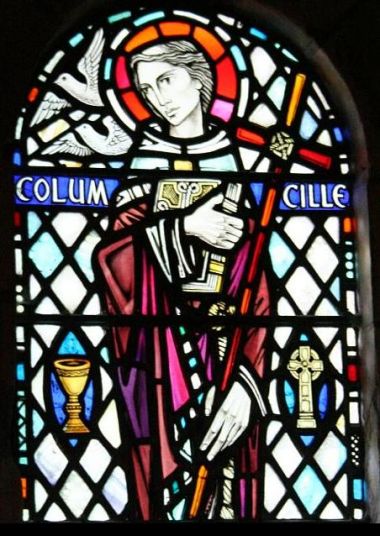Legends collide: the day Christian Saint Columba met Scotland's Loch Ness Monster
On this day, a millennium-and-a-half ago, the famed Saint Columba encountered the legendary Loch Ness Monster of Scotland. At least, so the story goes.

Columba is a revered icon of Christianity, largely credited with bringing the faith to Scotland, and most famously associated with the Scottish island of Iona – still a site of pilgrimage for many today.
Columba – whose Gaelic name is Colum Cille, meaning 'the dove of the Church' – was a spirited missionary and abbot who hailed from Ireland. He was trained by monks there, but in a pioneering trip arrived on Iona in the year 563.
Two years later it's said, as Christianity documents, that he had a momentous encounter with another emblem of Scottish culture: the Loch Ness Monster. During his travels Columba had to traverse the great Loch Ness. He had seen one injured man apparently bitten by a monster in the loch, but was not discouraged, and ordered one of his men to fetch a boat from the other side of the water.
When his follower, Lugne Mocumin, agreed to swim across, he was soon met by the monster who made for Lugne, ready to devour him.

However, a defiant, faithful Columba raised his hand, made the sign of the cross and declared to the creature: 'You will go no further, and won't touch the man; go back at once.'
The monster then fled in fright 'more quickly than if it had been pulled back with ropes,' the story tells.
The original account of this, written by the hagiographer Adamnan, provides what is believed to be the first written witness of 'Nessie' – about whom many stories now abound. Like the Loch Ness Monster, this fantastical story, written over a century after the events it details, is probably more myth than history – but it certainly adds colour to both the legends of Columba and Nessie.
Last month, scientists uncovered the cell where Columba dwelt, worked and spent his last days on Iona. The Abbey he founded there became a centre of literacy, learning and worship, and after his death Iona became a place of pilgrimage for kings and commoners. Some 60,000 pilgrims and tourists now visit the rebuilt abbey every year.











